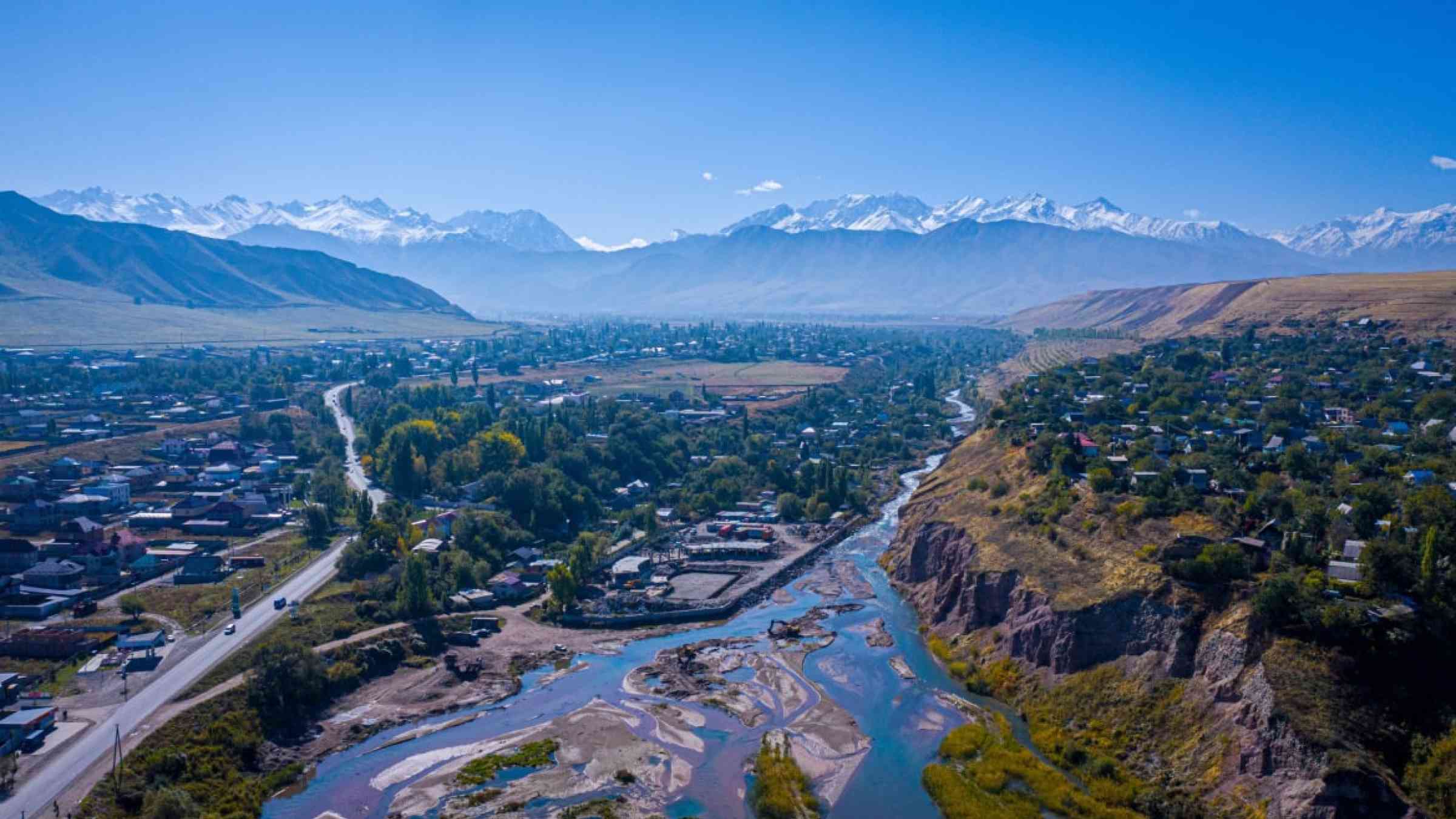The CADRI Partnership engagement in the Kyrgyz Republic

The Kyrgyz Republic presents a unique risk landscape. The country has made outstanding progress in economic growth and poverty reduction, but disaster losses and climate change impact threaten to push vulnerable communities back into poverty. The government called upon the CADRI Partnership to help identify needed investment in disaster risk reduction to protect its people, its eco-systems and its economy.
A unique risk landscape
The Kyrgyz Republic, a mountainous landlocked country in Central Asia, is exposed to a wide range of hazards. This vulnerability is further compounded by the impacts of climate change, especially given the country’s dependency on glacial meltwater for agricultural irrigation and energy generation. Historically prone to earthquakes, the country is now facing increasingly frequent mudslides and seasonal flooding. It also has to deal with the legacy of uranium tailings, as well as waste from mining industries which can potentially escalate into environmental catastrophe.
Not all stand equal in the face of climate change and disasters
Despite a gradual increase in incomes, parts of the population are left behind, principally female headed households, children of the rural poor, migrant workers, and people with disabilities.
The rural poor, who rely on agriculture for their livelihood, are more impacted by climate risks, while workers in the informal economy living in urban areas have been hit the hardest by the Covid-19 pandemic. Special attention must be given to strengthening country disaster risk reduction systems to cater to the needs and demands of the most vulnerable population groups.
This is what we do at the Capacity for Disaster Reduction Initiative (CADRI). A 20 organizations-strong partnership committed to support multi-sectoral approaches to reduce disaster and climate risks, CADRI is a part of the UN-wide effort to leave no one behind.
A multi-disciplinary team operationalizing the UN development System reform on the ground
Responding to the Government’s request, the CADRI Partnership deployed a multi-disciplinary team of experts from FAO, OCHA, UNDAC, UNDP, UNFPA, UNICEF, WFP and WHO to help assess national and local capacities to manage disaster risk. UNDRR supported the diagnosis of Bishkek municipality.
Welcoming the CADRI Partnership team
The government warmly welcomed the CADRI team and expects the diagnosis to inform the revision of the national disaster reduction plan. The UN Resident Coordinator further emphasized the opportunity to strengthen Government-UN System collaboration in disaster risk reduction under the new UN-Government cooperation framework 2023–2027.
Training amidst COVID-19 restrictions
The team of 25 experts including government and UN country team experts, was trained on the CADRI methodology in small groups to ensure compliance with the Covid-19 restrictions enforced at the time.
Meeting 200 actors in Bishkek, Issyk-Kul, Osh and Alamudun
In the space of two weeks, the CADRI team met with 200 representatives from central government, municipalities, civil society organizations and the private sector in Bishkek capital, Issyk-Kul district (industry), Osh region (rural), and Alamudun district (rural) to gather their views on additional capacities required to better manage disaster risk.
Producing risk information to reduce disaster losses
Kyrgyz Hydrological-Meteorological services have made great progress to produce short- and long-term forecasting, and warnings for extreme weather events. The next challenge is to better tailor the services to the needs of key sectors along with enhanced institutional cooperation and data sharing protocols.
Building Resilient Transport Infrastructure
Disaster risk modeling for critical infrastructure facilities is the first step in identifying priorities for investments to build resilient infrastructure. Development and applying the climate proof standards can significantly increase infrastructure resilience to future weather related disasters.
Operationalizing the Leave No One Behind (LNOB)
The CADRI mission team met with the Ministry of Social Protection and discussed the need to incorporate and mainstream gender equity and LNOB into the overall support provided by the Ministry. Integration of a LNOB and a gender dimension in disaster risk management and response will further increase the resilience of affected communities and support the most vulnerable groups in the country.
Getting better prepared to respond
The visit of the Fire & Rescue Services emphasized the need to upgrade the vehicle fleet and to further invest in training facilities to be able to respond to fire hazards and accidents.
The livestock sector is a long Kyrgyz tradition and farmers face various animal disease outbreaks. The State Veterinary Safety Inspectorate Service under the Ministry of Agriculture regularly monitors these risks together with private veterinary services and scientific institutions. The protocols and prevention measures are well developed, however further to improve outdated facilities and laboratory equipment is needed.
Schools are getting ready for disaster
The school administration is responsible for ensuring safety in the overall educational processes, as well as integrating a gender-sensitive approach. It is recommended to further develop the existing methodology for school vulnerability assessment.
Actionable recommendations to reduce risk
CADRI Partners helped the government identify the needed investment to build stronger systems to manage disaster risk. Recommendations will inform the updating of the National Disaster Risk Reduction Strategic Concept. The CADRI Partnership will assist the UN Country Team to align its capacity development efforts with national priorities under the new UN Sustainable Development Cooperation Framework 2023–2027.